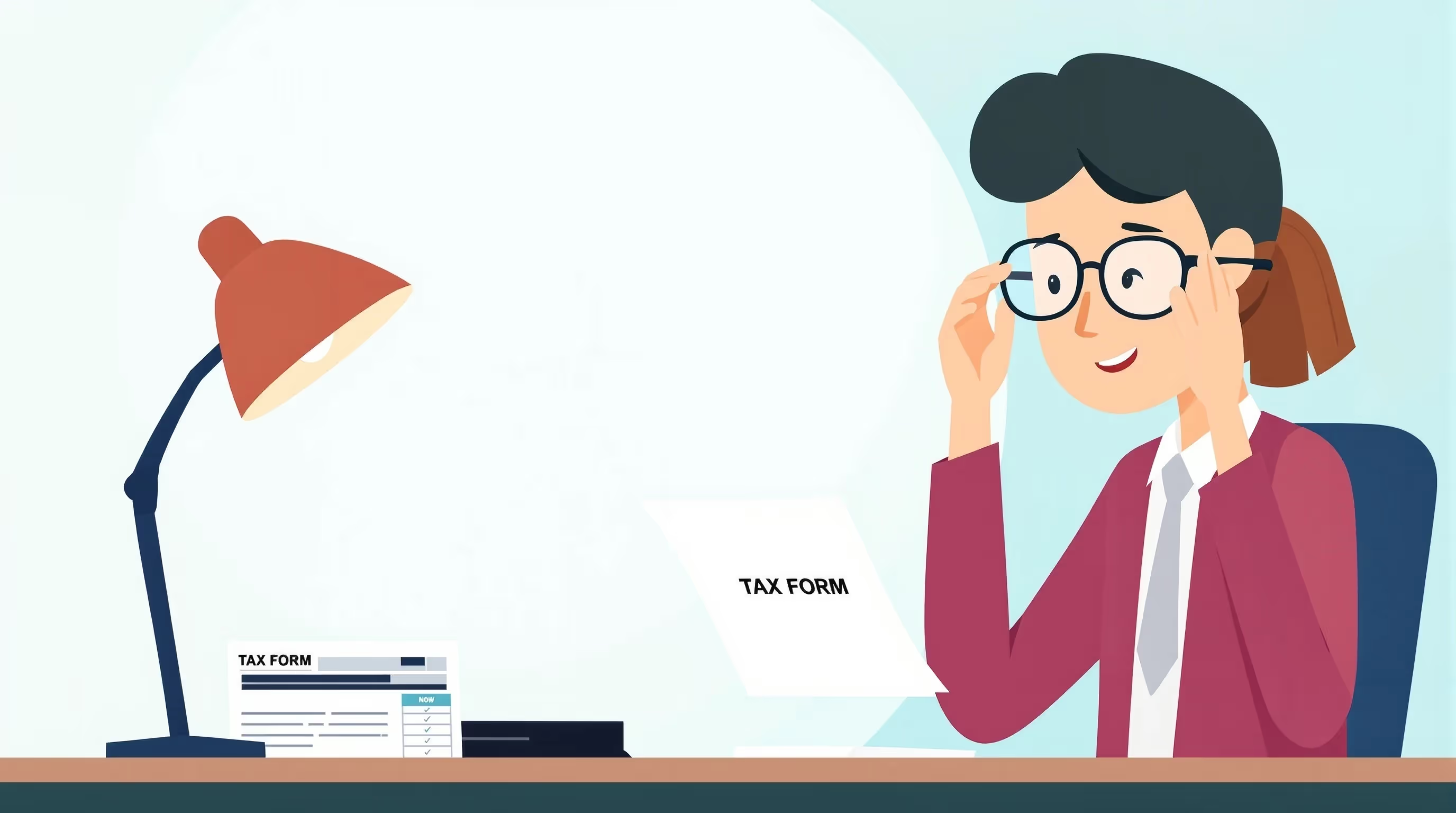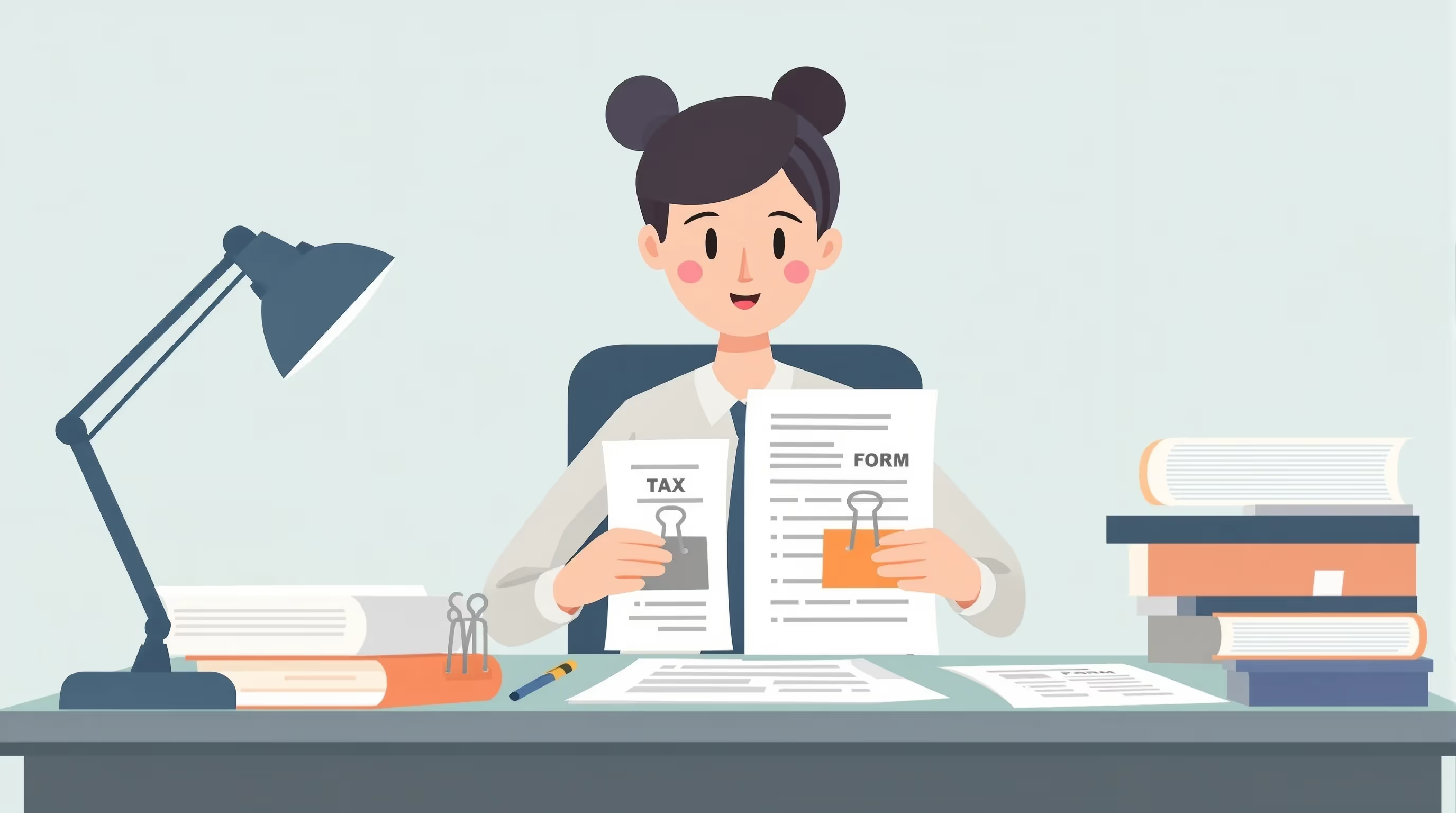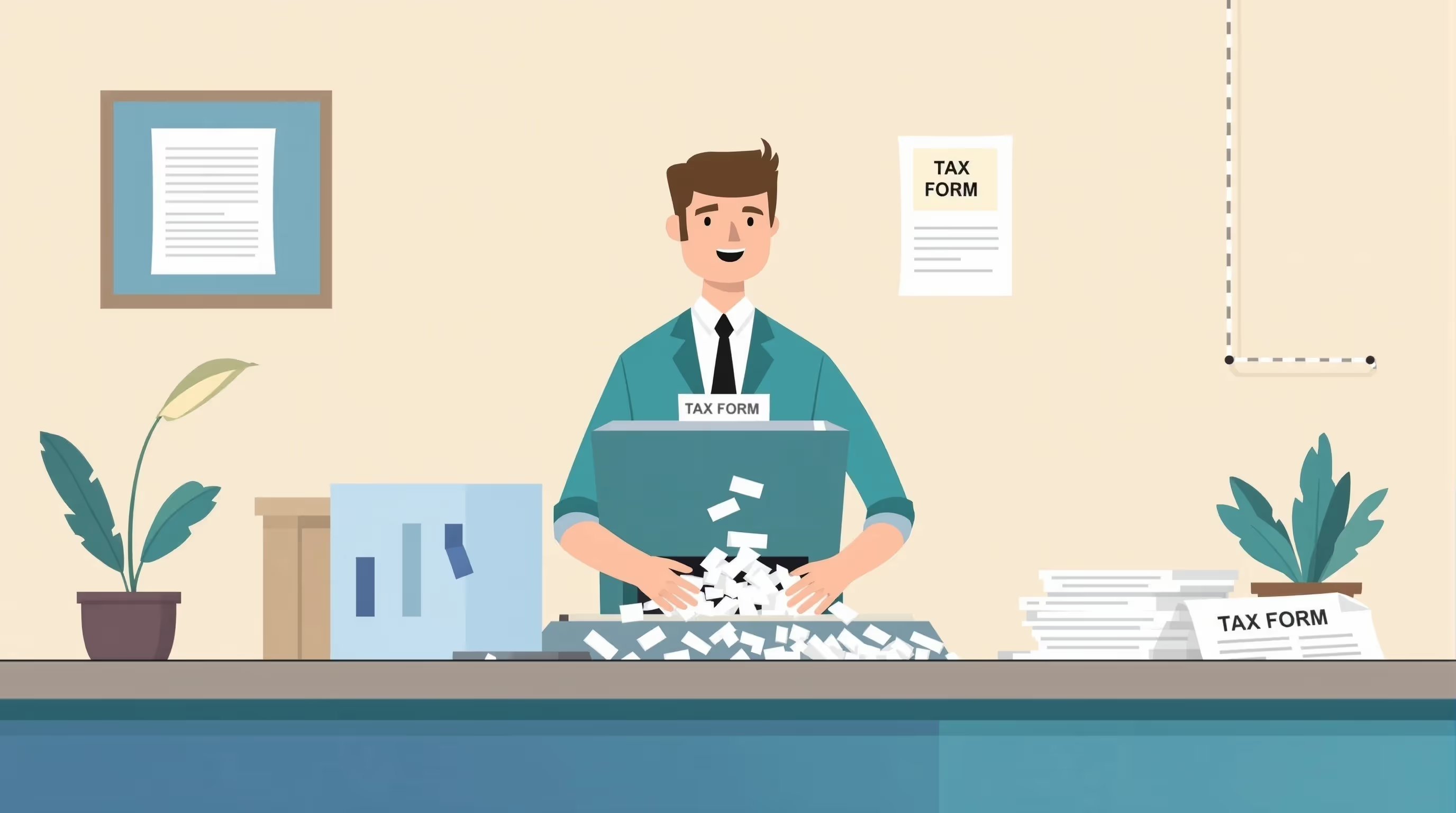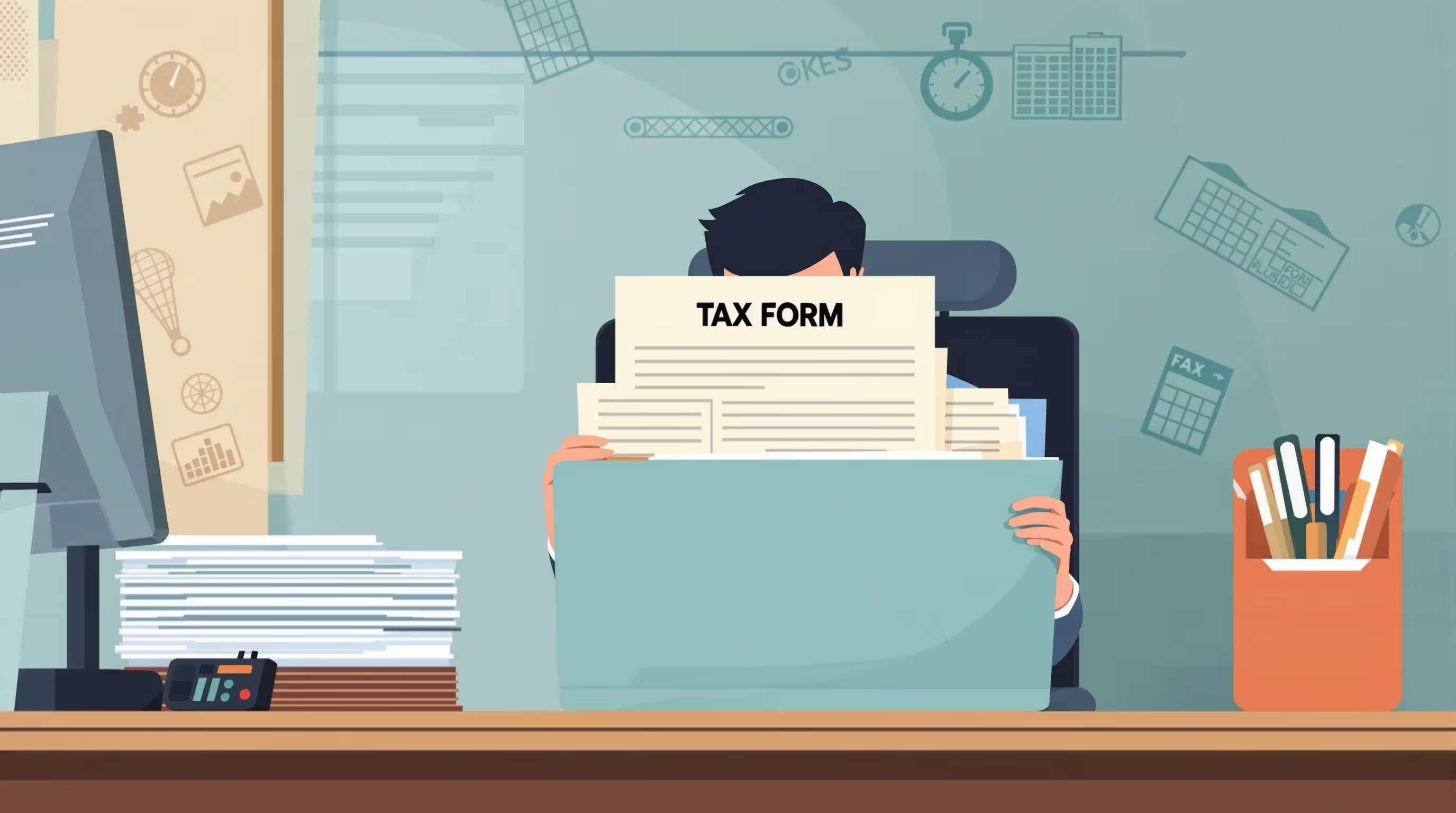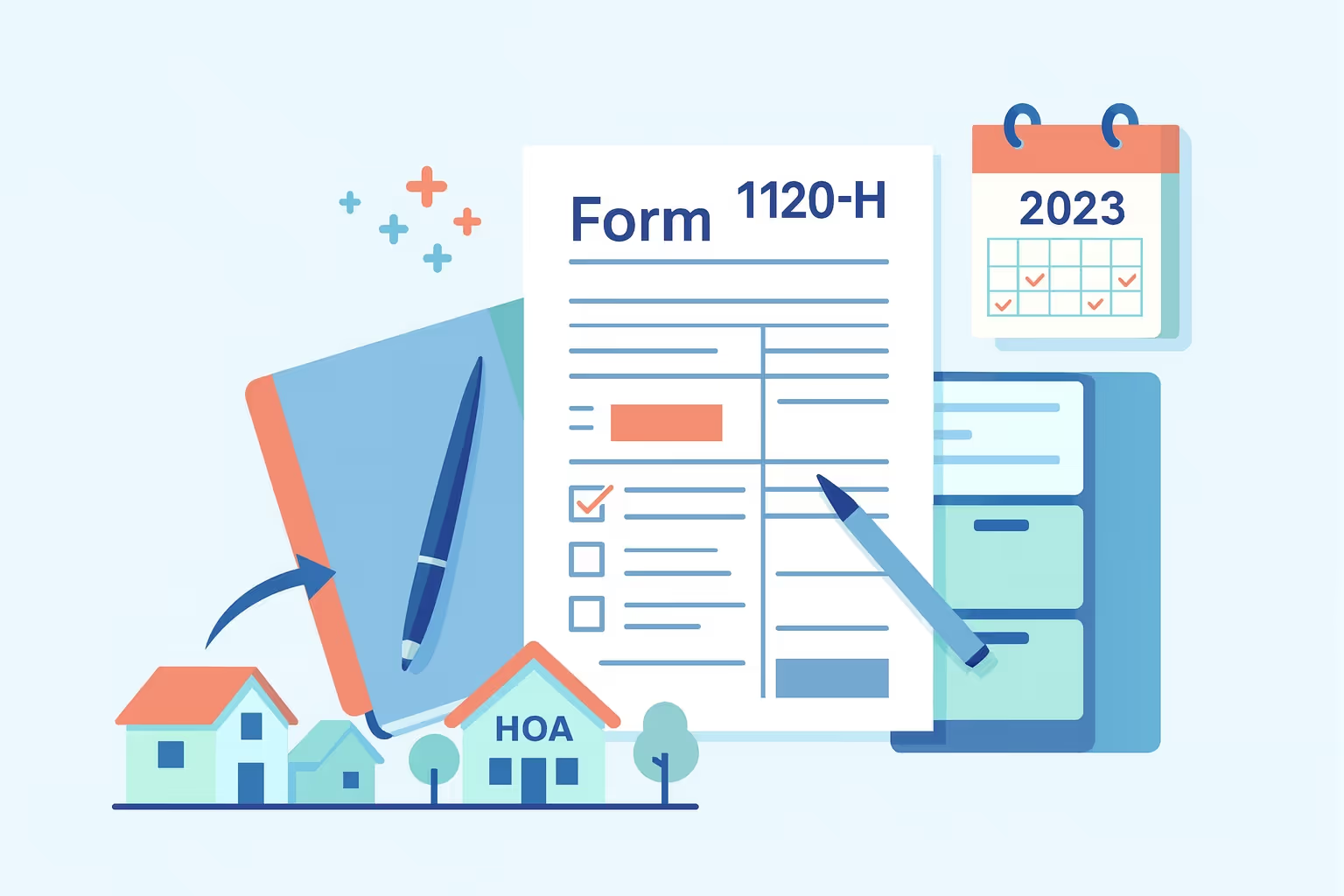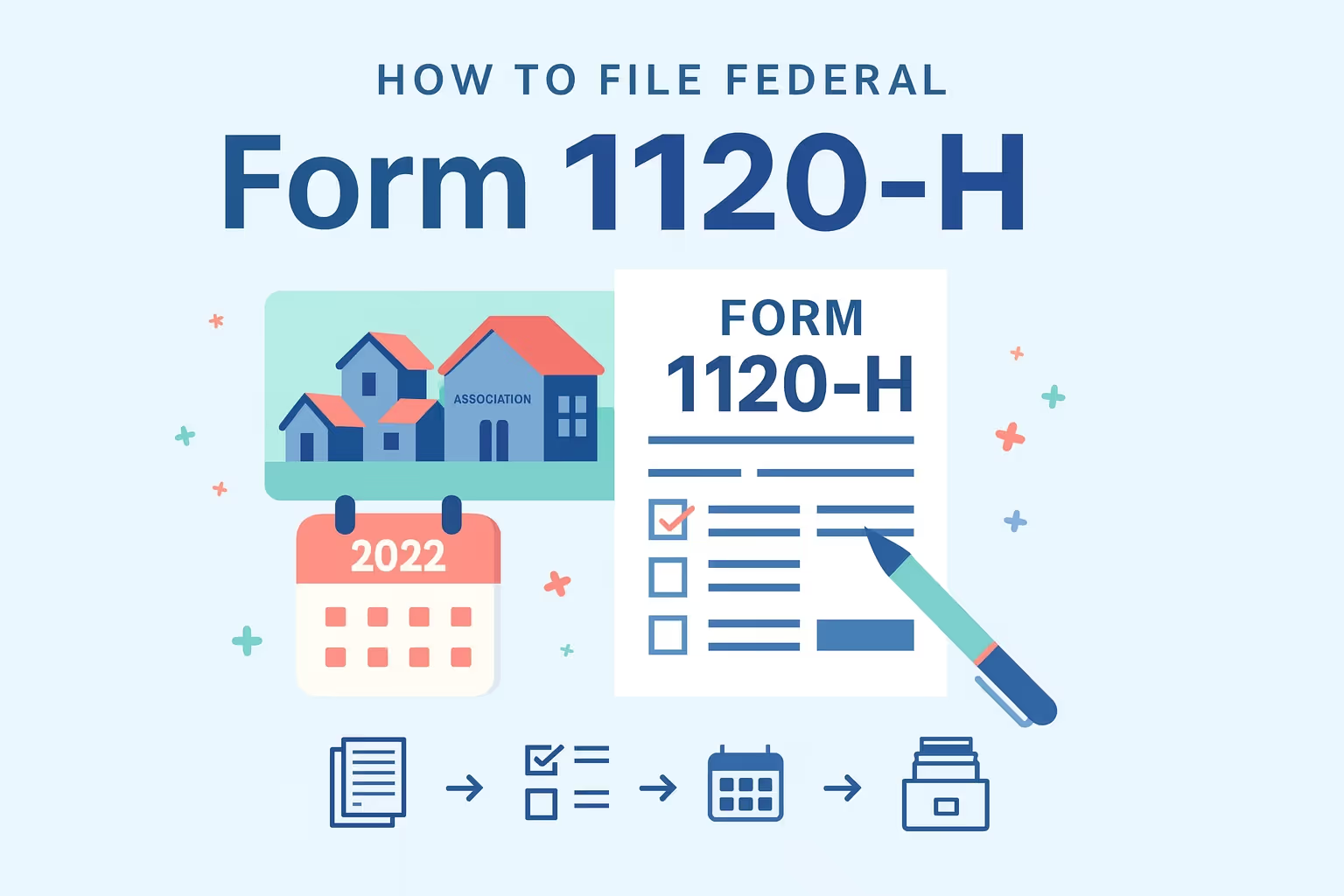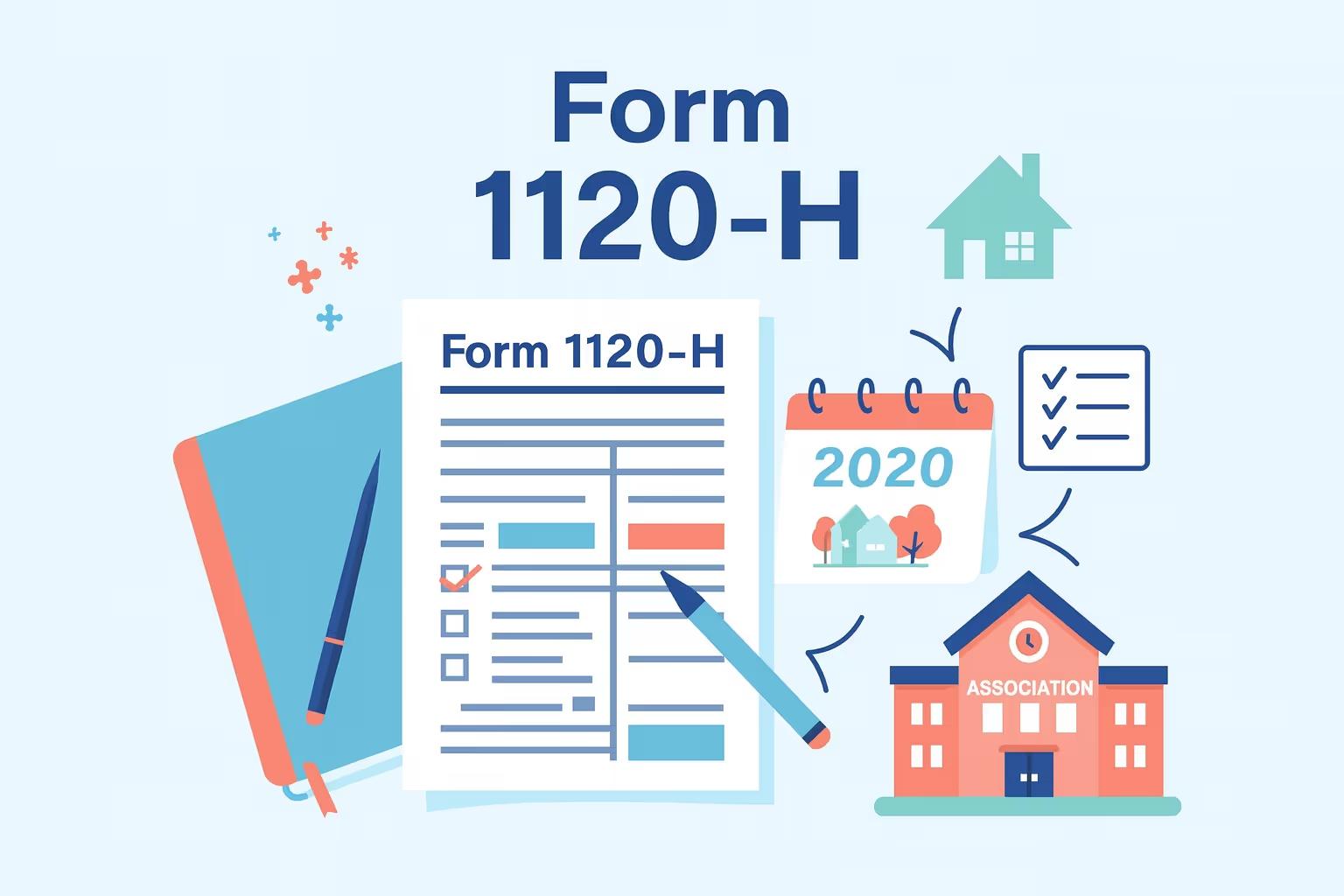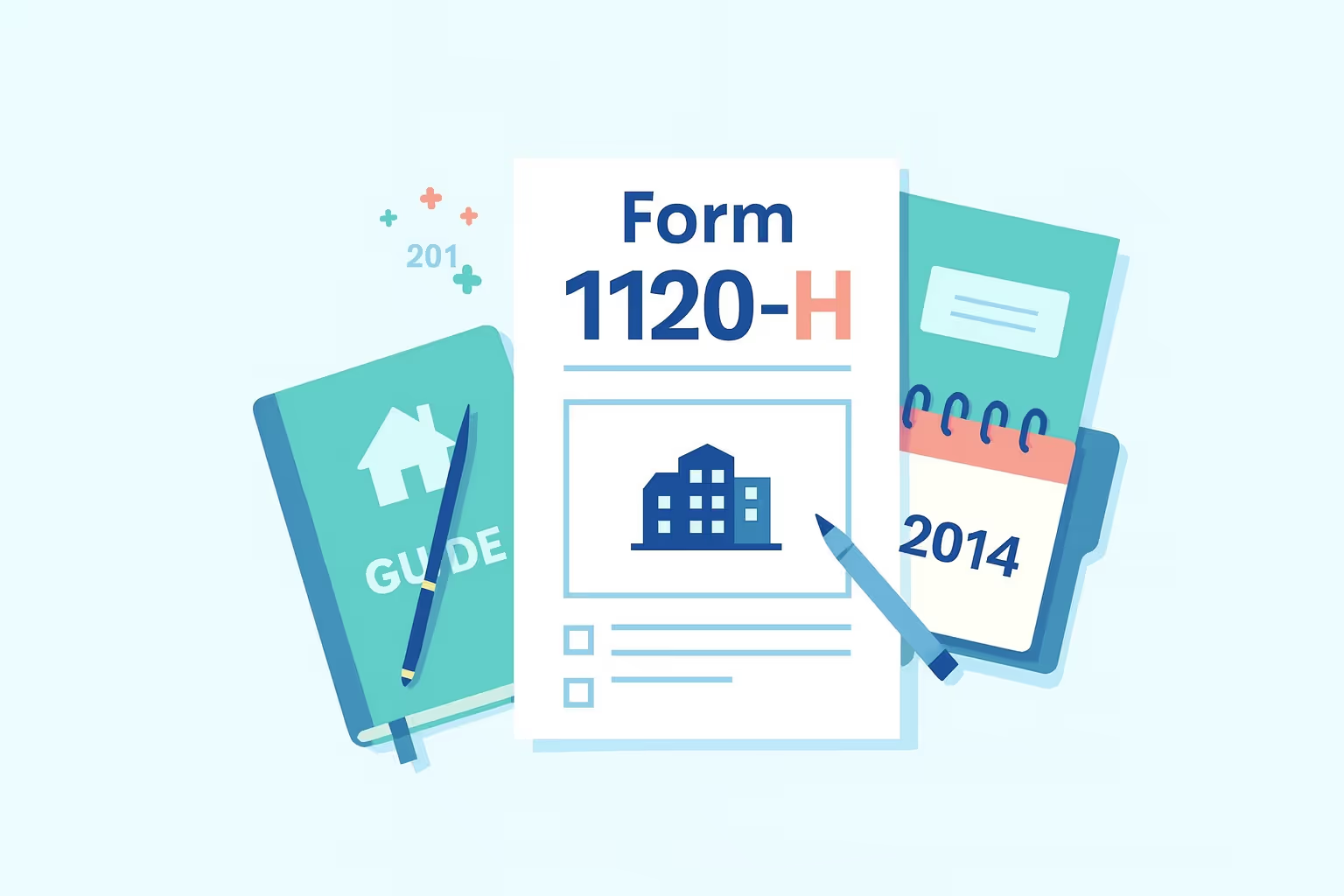How to File Federal Form 1120-H for Tax Year 2021
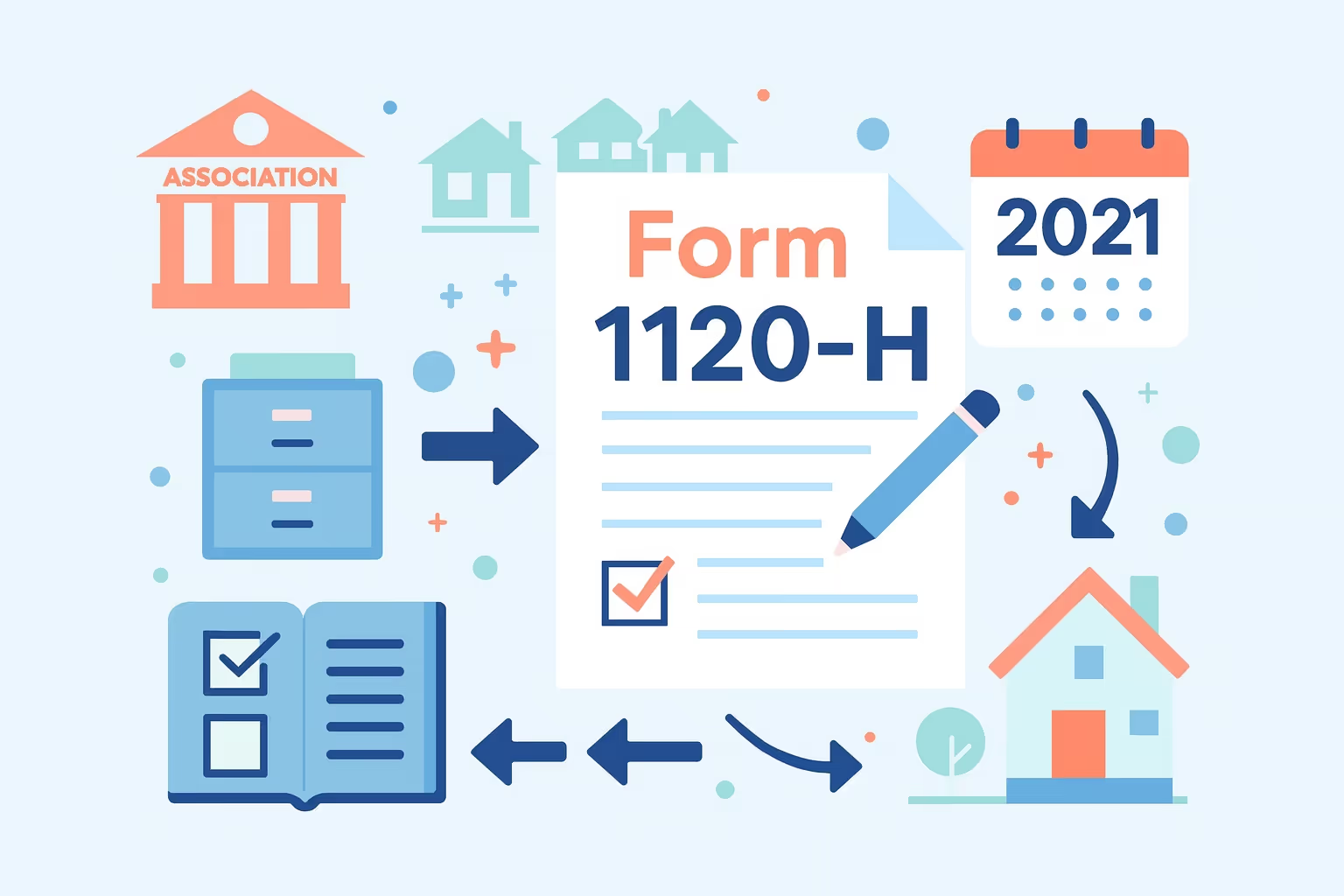
Thousands of homeowners' associations (HOAs) file their income tax returns incorrectly each year, often leading to penalties, delayed refunds, or unnecessary stress. According to the Internal Revenue Service, HOAs that fail to meet filing requirements can face a 5% monthly penalty on unpaid tax, making timely and accurate filing essential. Federal Form 1120-H for Tax Year 2021 was designed to provide certain tax benefits for HOAs, but only if completed correctly.
For many HOA boards, filing taxes can feel intimidating. The form requires organizations to distinguish between exempt and nonexempt function income, track the association’s expenses, and calculate taxable income under specific IRS rules. Mistakes such as misclassifying membership dues, overlooking deductible costs, or missing the due date can quickly become costly problems. Even well-managed associations risk losing valuable tax benefits provided under Section 528 of the Internal Revenue Code if errors go uncorrected.
This article will guide you through Federal Form 1120-H for Tax Year 2021. We will cover everything from qualification tests and filing requirements to detailed line instructions, payment options, and common mistakes to avoid. Whether you represent a condominium management association, a residential real estate management association, or a timeshare association, this guide will help ensure your HOA tax return is completed correctly and filed on time.
Understanding Federal Form 1120-H for Tax Year 2021
Filing taxes as a homeowners' association can be complex. Before working through calculations and schedules, it is essential to understand the purpose of Form 1120-H, who can file it, and the tax benefits provided.
What is Form 1120-H?
Form 1120-H is the U.S. Income Tax Return for Homeowners Associations. It was created by the Internal Revenue Service to give associations access to certain tax benefits provided under Section 528 of the Internal Revenue Code. Instead of filing a full corporation income tax return, a homeowners association files Form 1120-H to simplify reporting and to exclude exempt function income from taxation. Exempt function income consists of membership dues, assessments, and other fees that HOA members pay to support the organization’s facilities and association property.
Who Can File Form 1120-H?
Not every HOA qualifies. To file Form 1120-H, a homeowners association must fall into one of three categories:
- Condominium management associations: These organizations manage condominium housing units, which are substantially all used for residential purposes.
- Residential real estate management association: These associations manage subdivisions, developments, or residential units, ensuring that most properties are used for residential purposes.
- Timeshare associations: These organizations manage real property in which individuals hold timeshare ownership interests. Similar to condominium management associations, they are taxed slightly more.
Tax Benefits Provided Under Section 528
The most significant advantage when a homeowners association files Form 1120-H is the ability to exclude exempt function income from gross income. Non-exempt function income, such as interest income, guest fees from non-members, or rental of facilities, becomes taxable. Associations that qualify pay a flat tax rate: 30% for condominium and residential real estate management associations or 32% for timeshare associations.
These tax benefits reduce paperwork, limit the risk of audit issues, and provide clarity for HOAs that meet the filing requirements. However, filing Form 1120-H is an annual election; an association must make the choice each tax year by submitting a properly completed form by the due date.
Filing Requirements and Qualification Tests
Before a homeowners association files Federal Form 1120-H for Tax Year 2021, it must prove it qualifies. The IRS requires two main tests: the 60% gross income test and the 90% expenditure test. Both confirm that most of the association’s revenue and expenses serve residential purposes rather than business or investment activity.
The 60% Gross Income Test
To qualify, at least 60% of the association’s gross income must be exempt function income. Exempt function income consists of funds collected from HOA members, such as membership dues, assessments, and fees for using the organization’s facilities.
- An example of passing the test: An association collects $80,000 in membership dues and $20,000 in interest income. Since $80,000 out of $100,000 is exempt function income, 80% qualifies, exceeding the 60% requirement.
- Example of failing the test: An association collects $55,000 in assessments and $45,000 in rental income from non-members. Only 55% of gross income is exempt, which fails the test and disqualifies the association from filing Form 1120-H.
Failing the 60% test does not mean the HOA avoids taxes. Instead, it must file a full corporation income tax return using Form 1120, which often results in more complex reporting and potentially higher tax liability.
The 90% Expenditure Test
Associations must also show that at least 90% of their expenses relate to managing, maintaining, and caring for association property and residential units. These are known as qualifying expenditures.
- What counts: These include landscaping, real estate taxes, utilities for common areas, capital expenditures for repairs, and management salaries, which are considered qualifying association expenses.
- What does not count: These include investment purchases, transfers unrelated to the association’s services, or personal costs of board members.
Failure to meet the 90% test means the homeowners' association files a different tax form and risks losing certain tax benefits.
Filing Requirements and Deadlines
The Internal Revenue Service sets strict rules for filing.
- Due date: The HOA tax return for Tax Year 2021 was due April 15, 2022. If the date falls on a legal holiday or weekend, it moves to the next business day.
- Extensions: An association may request an extension by filing Form 7004. This grants six additional months to file, but does not extend the time to pay principal tax owed. Any unpaid tax is still due on the original deadline.
- Penalties: Missing the deadline can result in a 5% monthly failure-to-pay penalty or a 10% failure-to-file penalty on unpaid tax. These penalties can quickly add up, making timely filing essential.
Comparison 1: Form 1120-H vs. Form 1120
Form 1120-H
- Tax Rate: Flat 30% (32% for timeshare associations).
- Income Exclusions: Exempt function income (such as member dues and assessments) can be excluded from taxation.
- Complexity: Shorter and easier to prepare.
- Who Benefits Most: Best suited for HOAs with mostly exempt function income.
Form 1120
- Tax Rate: Graduated corporate tax rates (currently up to 21%).
- Income Exclusions: No exclusions — all gross receipts are considered taxable.
- Complexity: Requires more detailed schedules and reporting.
- Who Benefits Most: Often advantageous for HOAs with significant non-exempt function income.
Step-by-Step Filing Instructions
Filing Federal Form 1120-H for Tax Year 2021 requires precision. The Internal Revenue Service provides specific line items, and mistakes can lead to delays or penalties. Below is a structured, line-by-line breakdown to help your homeowners' association file a properly completed form.
Association Information (Items A–E)
- Choose your association type: Indicate whether your group is a condominium management association, a residential real estate management association, or a timeshare association. This selection determines which tax rate applies to your taxable income.
- Enter exempt function income and expenditures: Item B requires reporting exempt function income, which consists of membership dues, assessments, and fees for association property maintenance. Item C requires qualifying expenditures for the association’s services, such as maintenance costs, insurance, or legal fees.
- Report total expenditures and interest: Item D requires reporting all spending, even those unrelated to association purposes. Item E requires reporting tax-exempt interest received, such as interest on municipal bonds.
Reporting Income (Lines 1–8)
Non-exempt function income must be reported clearly. This includes funds that are not exempt under Section 528.
- Line 1: Report dividends, for example, if an association earns $500 in dividends from an investment account, this amount must be reported here.
- Line 2: Report taxable interest; for example, interest income from bank deposits or CDs must be included in this line.
- Line 3: Report gross rents. If the association rents the clubhouse to non-members, this rental income becomes part of gross receipts and is taxable.
- Line 4: Report gross royalties. Most HOAs leave this line blank, but they must be reported here if royalties exist.
- Line 5: Report capital gains, including investments or real property sales. For detailed reporting, attach Schedule D.
- Line 6: Report other gains or losses; if the HOA sold business property, this income or loss must be reported using Form 4797.
- Line 7: Report other income, including guest fees, late fees, or vending machine commissions, and a supporting statement must always be attached.
- Line 8: Report total gross income, which refers to the sum of lines 1 through 7, representing all non-exempt function income.
Deductions Directly Connected (Lines 9–18)
Only expenses directly tied to producing taxable income are deductible. The Internal Revenue Service clearly states that most associations' expenses for residential units and exempt function income are not deductible here.
- Line 9: Report salaries and wages, which apply only to employees working on activities that generate non-exempt function income.
- Line 10: Report repairs and maintenance, which applies only to property that generates non-exempt income, such as a clubhouse rented to non-members.
- Line 11: Report rents, including any rent paid for facilities that produce taxable income.
- Line 12: Report taxes and licenses, directly connected to non-exempt function income.
- Line 13: Report interest on loans, which applies only to loans connected to taxable income. The Section 163(j) limitation may apply if significant expenses require Form 8990.
- Line 14: Report depreciation, which covers property tied to taxable income, must be supported by Form 4562.
- Line 15: Report other deductions directly connected, including bank fees on investment accounts or commissions on rental income.
- Line 16: Report total deductions, the sum of lines 9 through 15.
- Line 17: Report taxable income before the specific deduction, which is the gross income minus all deductions.
- Line 18: Report the $100 specific deduction, which applies automatically to all qualifying homeowner associations.
Calculating Taxable Income and Tax Rate (Lines 19–26)
- Calculate taxable income: Subtract the $100 deduction from line 17 to find the net income subject to tax.
- Apply the correct tax rate: Condominium and residential real estate management associations must apply a 30% rate, while timeshare associations must use a 32% rate.
- Account for tax credits: Most HOAs will not qualify, but some may use credits such as foreign tax paid or the general business credit.
- Compute total tax due: Subtract any credits from the calculated tax to determine the total tax owed.
- Report payments made: Lines 23a–23f require reporting estimated tax payments, prior overpayments, and any amounts paid with extension requests.
- Determine balance or refund: Line 24 shows the balance owed if payments are less than the liability. Line 25 shows an overpayment. Line 26 allows the association to request a refund or apply the overpayment to next year’s estimated tax payments.
Example Calculation
Consider a condominium management association with the following figures:
- Non-exempt function income: The HOA receives $5,000 interest and $1,000 from clubhouse rentals. This results in a total of $6,000 in taxable gross receipts.
- Deductions directly connected: The HOA spends $1,200 in bank fees and $300 in maintenance tied to rentals, totaling $1,500 in deductions.
- Taxable income before deduction: The HOA’s gross income of $6,000 minus $1,500 in deductions results in $4,500 of taxable income before the specific deduction.
- Specific deduction: The automatic $100 deduction applies to all qualifying associations. This reduces taxable income from $4,500 to $4,400.
- Net taxable income: After applying the specific deduction, the HOA has $4,400 in net taxable income.
- Tax rate: At the 30% rate for condominium management associations, the HOA owes $1,320 in federal tax.
This example highlights how an HOA’s gross receipts and deductions determine the net profit subject to federal tax.
Filing Methods and Payment Instructions
After calculating the total tax, the next step is deciding how to file and pay. The Internal Revenue Service allows homeowners' associations to file electronically or by paper, but many organizations benefit from electronic filing. Understanding the options helps avoid delays and ensures that the federal tax paid is appropriately recorded.
Electronic Filing
Electronic filing is required for associations that annually file 10 or more federal tax returns. This rule applies to Form 1120-H, Forms 1099, W-2, and any other federal tax returns filed by the HOA.
- Faster processing: Returns filed electronically are generally processed more quickly, allowing refunds to arrive within 30 days.
- Reduced risk of errors: IRS-approved software automatically checks calculations, reducing mistakes that may delay the refund.
- Immediate confirmation: Associations receive an acknowledgment notice once the IRS accepts the submission.
- Direct deposit of refunds: If the HOA is owed a refund, electronic filing allows the IRS to deposit funds directly into the association’s bank account.
Paper Filing
Some homeowner's associations may still qualify to file on paper. This option applies if the HOA files fewer than 10 total returns during the tax year.
- Mailing requirements: The address depends on the association’s state. HOAs in the country's eastern half must mail returns to Kansas City, while those in western states must send them to Ogden, Utah.
- Certified mail option: Sending the HOA tax return through certified mail with return receipt requested provides proof that the IRS received the filing.
- Private delivery services: Certain services are approved by the IRS, but they cannot deliver to P.O. boxes. Associations using this option must confirm the correct delivery location.
Comparison 2: Electronic Filing vs. Paper Filing for Form 1120-H
Electronic Filing
- Processing Speed: Refunds are typically processed within 30 days.
- Confirmation: Immediate acknowledgment from the IRS.
- Error Reduction: Software validation helps reduce miscalculations and filing mistakes.
- Refund Method: Direct deposit is available for faster refunds.
Paper Filing
- Processing Speed: Refunds may take 8 weeks or longer.
- Confirmation: Proof of mailing is only available through certified mail or a delivery receipt.
- Error Reduction: Higher risk of math errors or clerical mistakes.
- Refund Method: Refunds are sent by check, which takes longer.
Payment of Tax Due
The Internal Revenue Service requires all tax due to be paid by the filing deadline, regardless of extensions. Associations may use several methods.
- Electronic Federal Tax Payment System (EFTPS): This is the most secure and reliable method, available 24/7 at no cost.
- IRS Direct Pay or card payments: Associations may pay directly from a bank account or use a debit or credit card. Card payments may include small processing fees.
- Installment agreements: If the HOA cannot pay in full, it may qualify for a payment plan if the balance is $25,000 or less and can be paid within 24 months. Interest and reduced penalties still apply.
Timely filing and payment are crucial. Even if an association files for an extension, unpaid tax is still due by the original deadline, and penalties apply to late fees.
Required Schedules, Attachments, and Record Keeping
Completing Federal Form 1120-H for Tax Year 2021 may require attaching additional schedules or forms. These attachments ensure the Internal Revenue Service has all details related to non-exempt function income, deductions directly connected, and capital gains. Proper record keeping also protects the association in case of IRS inquiries.
Common Attachments
Some HOAs must include additional schedules with their income tax return.
- Schedule D: This form must be attached if the HOA sold investments or property at a gain. For example, the gain must be reported here if an association sold stock from reserve funds.
- Form 4562 must be attached when claiming depreciation on property used to generate taxable income. This may include vehicles, office equipment, or facilities rented to non-members.
- Supporting statements: These statements must be attached for items such as other income or other deductions. Each statement should include the association’s name, EIN, and a clear description of the amounts reported.
Record Keeping Requirements
The Internal Revenue Service requires associations to keep complete income, expenses, and attachments documentation.
- Financial records: HOAs must keep bank statements, investment account records, and receipts that support deductions directly connected to taxable income.
- Property and capital expenditures: Associations must keep documents related to real estate taxes, improvements, and other capital expenditures until the property is sold or disposed of, plus three years.
- Retention periods: Most records must be kept for at least three years after filing. If income is underreported by more than 25 percent, records must be kept for six years. Property-related documents may need to be maintained indefinitely.
Maintaining thorough records helps ensure a homeowners association files a properly completed form and protects its tax-exempt status. In addition, clear supporting documentation reduces the likelihood of penalties, interest charges, or challenges to federal tax paid.
Common Mistakes to Avoid
Even well-managed homeowner associations can make costly errors when filing Form 1120-H. These mistakes often lead to unpaid tax, penalties, or loss of tax benefits provided under Section 528 of the Internal Revenue Code. Avoiding them saves both time and money.
Errors with Qualification Tests
- Failing the 60% gross income test: Some HOAs overestimate exempt function income and discover too late that less than 60% of gross receipts qualify. This failure forces the association to file Form 1120 instead, which is more complex and may increase total tax owed.
- Failing the 90% expenditure test: Misclassifying expenses is a common problem. For example, treating investment purchases as qualifying expenses can cause the HOA to fall below the 90% threshold, which risks losing eligibility to exclude exempt function income.
Filing Errors
- Forgetting the $100 specific deduction: Every qualifying HOA is entitled to this deduction. Overlooking it results in paying more federal tax than necessary.
- Applying the wrong tax rate: Timeshare associations are taxed at 32%, while condominium management associations and residential real estate management associations pay 30%. Using the wrong rate can create unpaid tax liabilities.
- Incorrect signatures: Only an authorized officer may sign the HOA tax return. Errors in the paid preparer section or missing signatures can invalidate the filing.
Payment and Deadline Mistakes
- Missing the filing due date: Filing late without paying principal tax leads to a 5% monthly penalty for failure to pay and a 10% penalty for failure to file, which compounds quickly.
- Including payment with the return: The IRS requires payment to be made separately, usually through EFTPS or Direct Pay. Sending a check with the return may result in delays and processing issues.
By avoiding these errors, a homeowners association ensures that its income tax return is accurate, its tax-exempt status is preserved, and unnecessary costs do not burden its members.
FAQs
What income qualifies as exempt function income?
Exempt function income consists of membership dues, assessments, and fees that HOA members pay for the association’s services. These funds are used for maintaining association property, residential units, or shared facilities. It does not include non-exempt function income such as interest, rental income from non-members, or capital gains. Exempt function income is excluded when a homeowners association files Form 1120-H, reducing gross and taxable income for the tax year.
Can a homeowners' association elect Form 1120-H every year?
Yes, a homeowners association elects Form 1120-H annually by filing the form with the Internal Revenue Service for that tax year. The election is not permanent, and the HOA can file Form 1120 instead in a future year if it results in lower tax liability. Filing requirements remain the same, and the completed form must be submitted by the IRS deadline.
What happens if my HOA misses the filing due date?
If the HOA misses the due date, it may face both unpaid tax penalties and interest charges. The IRS imposes a 5% monthly failure-to-pay penalty and a 10% failure-to-file penalty, which can quickly add up. The deadline shifts to the next business day if the date falls on a legal holiday or weekend. Filing on time preserves tax-exempt status and prevents costly penalties.
Are timeshare associations treated differently from other HOAs?
Yes, timeshare associations are taxed differently. While condominium and residential real estate management associations pay a 30% tax rate on taxable income, timeshare associations pay 32%. Timeshare ownership interests are also structured differently, which affects how the IRS views exempt function income. Timeshare associations still qualify for certain tax benefits provided by Section 528, but generally face higher tax liability than other HOAs.
Do estimated tax payments apply to HOAs?
Most HOAs filing Form 1120-H do not need to make estimated tax payments. However, estimated tax may apply if the association switches to Form 1120 in a later tax year. In cases where payments are required, the association manager can schedule deposits using the Electronic Federal Tax Payment System (EFTPS). This system ensures federal tax returns are compliant and helps avoid underpayment penalties.






